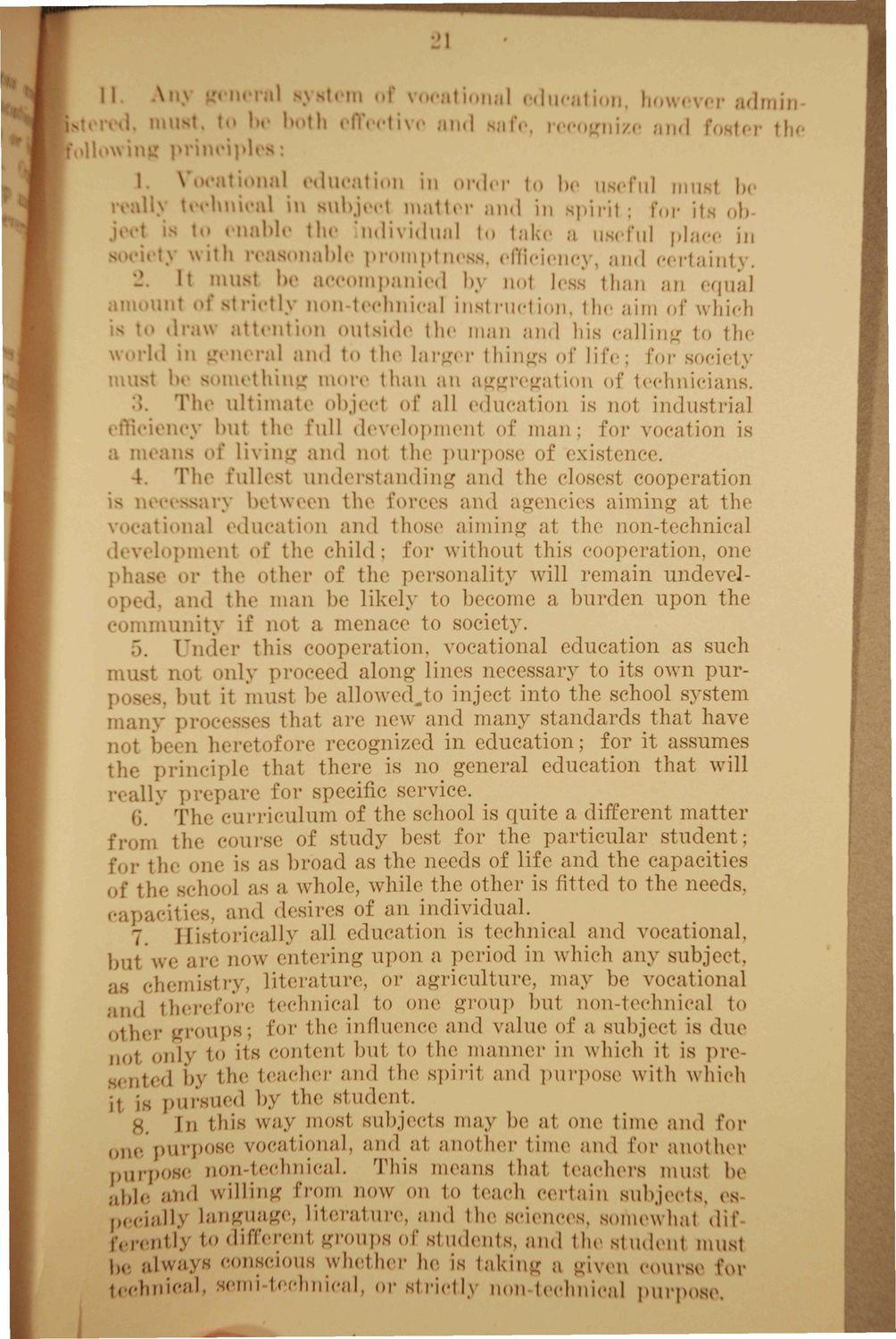| |
| |
Caption: Booklet - What is Involved in a Vocational Education (Davenport) (1915)
This is a reduced-resolution page image for fast online browsing.

EXTRACTED TEXT FROM PAGE:
:M II s-( • \n\ nrral system of vocational lueati how< adrnin HH\ I l both H 'tivo and Kafe, i . w nm and foster tin IIIOM in inciplca: 1. \ national i lucation in order to I useful musl be r ii\ t Imi d in subject matter and in spirit; for its object i liable the individual to tal a useful place in \ with i' Lsoiiablc pi mptness, efficiency, and certainty* 2. It must I* a >mpanicd by nol l H than an equal < amount of strictly mm technical instruction, the aim of w hich is t- draw attention outside the man and his calling to the v Id in al and to the larg< r things of lif< I'm* society must hi - mething more than an aggregation of technicians. ultimate objeel of all education is not industrial iciency but the full development of man; for vocation is means oi living and not the purpose of existence. 4. The fullest understanding and the closest cooperation is i ssary between the forces and agencies aiming at the \ cational education and those aiming at the non-technical • >men1 of tli child; for without this cooperation, one phi or the other of the personality will remain undevelI. and the man be likely to become a burden upon the c mmunity if not a menace to society. 5. Under this cooperation, vocational education as such must not only proceed along lines necessary to its own purpost 3, but it must be allowedjo inject into the school system m ny procec 9 that are new and many standards that have not been hei ""fore recognized in education; for it assumes the principle that there is no general education that will l ally prepare for specific service. 6. The curriculum of the school is quite a different matter n in the course of study best for the particular student: I'm- the one is as broad as the needs of life and the capacities of the Bch( -I as a whole, while the other is fitted to the needs, ,. paciti< . and desires of an individual. Historically all education is technical and vocational, but w are now entering upon a period in which any subject, < as chemistry, literature, or agriculture, may be vocational ,,,d therefore technical to one group but non-technical to other groups; for the influence and value of a subject is due no t only to its content but to the manner in which it Is present by the teacher and the spirit and purpose with which it is pursued by the student. 'i> / . 8. In this way most subjects may be at one time and \\)v pne purpose vocational, and at another time and (ov a n o t h e r purpose non-technical. This means that teachers must he a l,],. a nd , ,.jally willing from now on to teach certain subjects, es language, literature, and the sciences, somewhat dif fercntly to different -roups of students, and the student must I always conscious whether he is taking a given course for technical, semi technical, or strictly non technical purpose
| |